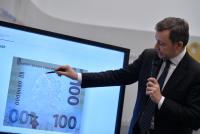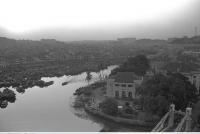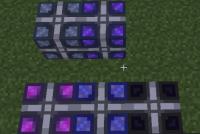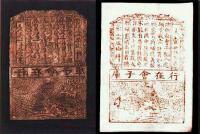The capital intensity of production is calculated as a ratio. How capital intensity is calculated: formulas and important nuances. The value of the rate of return on assets
Efficiency is considered one of the basic phenomena for assessing the performance of an enterprise at the end of the period. Performance indicators are always relative and allow you to assess the dynamics and compare organizations with each other.
Capital intensity, along with capital productivity and profitability indicators, allows you to most fully reflect the effectiveness of the organization.
What is capital intensity
The essence of this indicator is reduced to assessing the efficiency of the exploitation of fixed capital.
In other words, capital intensity shows the ratio of the value of fixed assets to one of the types of profit.
The quantitative measurement reflects how many rubles must be invested in fixed assets to get one ruble of profit.
Capital intensity is also reflected as the reciprocal.
How to calculate capital intensity - formula and calculation example
The algorithm for finding the capital intensity is as follows.
First you need to find data on the indicators used. That is, revenue, gross profit and sales profit. They are usually reflected in the report on financial results or are located according to the enterprise data.
Capital intensity is found as the ratio of income to the average cost of fixed assets.
The indicator is measured either in value terms [rubles / rubles], or in percent [%].
General calculation formula
Capital intensity is calculated using this formula:
COR \u003d C ok / TRwhere
In turn, the revenue and the average value of fixed assets are found as:
TR \u003d P * Q,
P (price) - unit price, rubles;
Q (quantity) - the number of products produced, pcs.
C ok \u003d (C np + C kp) / 2,
С np - the cost of capital at the beginning of the period, rubles;
С кп - cost of capital at the end of the period, rubles.
The indicator can be found through the return on assets:
COR \u003d 1 / CP,
CP– return on assets, rub / rub.
If a different type of profit is applied, the formulas are as follows:
a) COR \u003d C ok / OP,
COR (capital-output ratio) - capital intensity, RUB / RUB;
OP (operatingprofit) - profit from sales, rubles;
C ok (capital) - average annual cost fixed assets, rub.
OP \u003d TR– TC,
TR (totalrevenue) - proceeds (income) from sales, rubles;
TC (totalcost) - total production cost, rubles;
b) COR \u003d C ok / GP,
COR (capital-output ratio) - capital intensity, RUB / RUB;
GP (grossprofit) - gross profit.
C ok (capital) - the average annual cost of fixed assets, rubles.
GP \u003d TR– TC tech,
TR (totalrevenue) - proceeds (income) from sales, rubles;
TC tech (totalcost) - technological production cost, rubles.
The calculation formulas given under a) and b) are also called the capital intensity of products, since they reflect the operation of fixed assets in the production of goods, including taking into account the work in progress.
Balance calculation formula
The calculation requires the data of the statement of financial results and the balance sheet. All types of income are reflected in the report, the amount of fixed capital is in the balance sheet.
The capital intensity is equal to:
COR \u003d p. 1150 BB / p. 2110 OFRwhere
p. 1150 BB - the cost of fixed assets by balance sheet, rub.;
p. 2110 OFR - revenue from the statement of financial results, rubles.
The capital intensity of products is calculated as follows:
COR \u003d p. 1150 BB / p. 2100 OFRwhere
p. 2100 OFR - gross profit according to the statement of financial results, rubles.
COR \u003d p. 1150 BB / p. 2200 OFRwhere
p. 2200 OFR - profit from sales according to the statement of financial results, rubles.
Balance calculation example
Let us give an example of finding the capital intensity according to the balance sheet data based on the data of the company Ekran LLC.
In 2014, the capital intensity of fixed capital is COR \u003d (90,000 + 130,000) / 190,000 \u003d 0.58 rubles / rub. Thus, to obtain a ruble of income, it is necessary to use the amount of fixed assets of 58 kopecks.
According to the data, the capital intensity of products will be as follows:
a) COR \u003d COR \u003d (90,000 + 130,000) / 120,000 \u003d 0.92 rubles / rub.
b) COR \u003d (90,000 + 130,000) / 85,000 \u003d 1.29 rubles / rub.
So, to get a ruble of gross profit, you need to take 92 kopecks of fixed assets; for profit from sales, the value is 1.29 rubles.
What shows
The resulting value describes the company's performance and, in particular, reflects how well fixed capital is used for the production and sale of products, that is, it shows the return on equipment, buildings, structures in generating income. In general, the indicator characterizes the efficiency of the operation of fixed assets.
It is important for any company to calculate capital intensity and other indicators related to operational efficiency.
The value itself is relative and for a more objective assessment it is necessary to analyze the capital intensity over several periods and, if possible, compare it with the average indicators and results of competitors.
Fixed assets are means of labor that repeatedly participate in the production process, while maintaining their natural form, gradually wearing out, transferring their value in parts to newly created products. These include funds with a service life of more than one year and a cost of more than 100 minimum monthly salaries... Fixed assets are subdivided into production and non-production assets.
Production assets are involved in the process of manufacturing products or rendering services (machine tools, machines, devices, transmission devices, etc.).
Non-productive fixed assets are not involved in the process of creating products (residential buildings, kindergartens, clubs, stadiums, clinics, sanatoriums, etc.).
The following groups and subgroups of fixed assets are distinguished:
- 1. Buildings (architectural and construction facilities for industrial purposes: workshop buildings, warehouses, production laboratories, etc.).
- 2. Structures (engineering and construction facilities that create conditions for the production process: tunnels, overpasses, highways, chimneys on a separate foundation, etc.).
- 3. Transmission devices (devices for the transmission of electricity, liquid and gaseous substances: electrical networks, heating networks, gas networks, transmissions, etc.).
- 4. Machinery and equipment (power machines and equipment, working machines and equipment, measuring and regulating instruments and devices, computers, automatic machines, other machines and equipment, etc.).
- 5. Vehicles (diesel locomotives, wagons, cars, motorcycles, cars, carts, etc., except for conveyors and conveyors included in the production equipment).
- 6. Tools (cutting, percussion, pressing, sealing, as well as various devices for fastening, mounting, etc.), except for special tools and special equipment.
- 7. Production inventory and accessories (items to facilitate the performance of production operations: work tables, workbenches, fences, fans, containers, racks, etc.).
- 8. Household inventory (office and household items: tables, cabinets, hangers, typewriters, safes, duplicators, etc.).
- 9.. Other fixed assets. This group includes library funds, museum values, etc.
Return on assets is an economic indicator that characterizes the level of efficiency in the use of fixed assets of an enterprise or industry. In the English-language literature, for an indicator similar in its economic meaning, the term is used in the literal translation from English Fixed assets turnover ratio.
This indicator is used to characterize the dynamics of the efficiency of the use of fixed assets of the enterprise, as well as for comparative evaluation the efficiency of using fixed assets at enterprises of the same industry.
The rate of return on assets is determined by dividing the annual volume of production in value or physical terms by the average annual total book value production fixed assets. Determines the amount of products produced for one ruble or 1000 rubles of industrial fixed assets. Capital productivity indicators are calculated for existing and newly commissioned enterprises, can be calculated for all funds and separately for the active part of fixed assets.
The return on assets ratio is calculated using the following formula:
FD \u003d Volume of commercial output / Average annual cost of fixed assets (1.2.1)
The numerical value of the indicator depends on the industry characteristics, inflation rate and revaluation of fixed assets.
The higher the value of the indicator, the more efficiently fixed assets are used. This means that for each ruble of fixed assets, the organization receives more production. In other words, the organization spent less fixed assets for each ruble of revenue.
The main factors of growth in capital productivity are:
- 1. Increase in equipment productivity as a result of technical re-equipment and reconstruction of existing and construction of new enterprises;
- 2. Increase in the shift factor of the equipment;
- 3. Improving the use of time and power;
- 4. Reducing the cost of a unit of capacity of newly commissioned, reconstructed and re-equipped enterprises;
- 5. Replacement of manual labor by machine;
- 6. Improvement in the development of newly commissioned capacities.
The inverse return on assets is called capital intensity.
Fe \u003d 1 / Fo (1.2.2)
Capital-labor ratio - an economic indicator characterizing the equipment of workers of enterprises in the sphere of material production with basic production assets (means). It is defined as the ratio of the value of fixed assets of the enterprise (in comparable prices) to the average annual number of employees (workers).
FV \u003d CO / PR (1.2.3)
FV - capital-labor ratio;
CO - the cost of fixed assets;
PE - the number of personnel (as a rule, production personnel are taken).
STOCK CAPACITY OF PRODUCTS - an indicator inverse to capital productivity; used to determine the requirements for fixed assets. It is calculated as the ratio of the average annual value of fixed assets to the value of manufactured products for a certain period. Distinguish between indicators of direct and full capital intensity. Direct capital intensity takes into account the basic production assets of the enterprise. The total capital intensity, along with the main production assets of an enterprise involved in the production of products, includes the cost of fixed production assets that operate at other enterprises and participate in the production and provision of inventory values \u200b\u200bfor this enterprise - the manufacturer of the final product. For example, in the automotive industry, the cost of fixed assets per 1,000 rubles. products is 360 rubles. However, it is associated with the use of inventories of other related industries (metallurgy, instrumentation, petrochemical industry, etc.), as well as with the use of fixed assets, the specific value of which is also taken into account in the automotive industry based on the cost of fixed assets attributable to the volume of supplies of products of related enterprises (i.e., indirect capital intensity). Taking into account the indirect capital intensity, the total capital intensity is 1 thousand rubles. products of the automotive industry exceeds 1.5 thousand rubles.
A Brief Dictionary of the Economist. - M .: Infra-M... N. L. Zaitsev. 2007.
See what is "PRODUCT CAPACITY" in other dictionaries:
Capital intensity - an indicator of Soviet statistics, equal to the quotient of dividing the value of fixed assets by the annual output of products using these funds. See also: Fixed Assets Finam Financial Dictionary. Capital intensity is an indicator inverse to capital productivity. ... ... Financial vocabulary
capital intensity - An indicator calculated as the value of fixed assets divided by the annual output using these funds. Reverse capital productivity indicator. capital intensity Indicator determined by volume ... ... Technical translator's guide
Capital intensity - [capital intensiveness] indicator, determined by the volume of production assets per unit of production: x2 / p (see the notation in the article Production function). At the macroeconomic level, the F. of the total public is measured ... Economics and Mathematics Dictionary
Capital intensity - a parameter inverse to the parameter of return on assets, calculated as the ratio of the cost of fixed assets to the cost of annual output. Dictionary of business terms. Academic.ru. 2001 ... Business glossary
STOCK CAPACITY - an indicator of Soviet statistics, equal to the quotient of dividing the value of fixed assets by the annual output of products using these funds. The inverse indicator of the efficiency of using fixed assets is called the return on assets. Raizberg B.A., ... ... Economic Dictionary
capital intensity - STOCK CAPACITY and; g. Econ. The ratio of fixed assets to production products... Growth of production assets ... encyclopedic Dictionary
STOCK CAPACITY - in Soviet statistics: an indicator equal to the quotient of dividing the cost of fixed assets by the annual output of products using these funds. The inverse indicator of the efficiency of using fixed assets is called the return on assets ... Encyclopedic Dictionary of Economics and LawBig Dictionary of Economics
For the efficient operation of the enterprise, it is important to control the level of income and expenses. This is possible when calculating capital investmentsproduced for the development of the production cycle.
The cost of purchasing equipment is paramount. They form the basis of production assets.
Dear Readers! The article talks about typical ways of solving legal issues, but each case is individual. If you want to know how to solve exactly your problem - contact a consultant:
APPLICATIONS AND CALLS ARE ACCEPTED 24/7 and WITHOUT DAYS.
It is fast and IS FREE!
When calculating, the capital intensity ratio must be taken into account. It is necessary to assess the rationality of the use of funds that are basic in the production cycle.
The essence of the concept
Capital intensity is the value that is calculated based on the value of production assets when converting them into the ruble equivalent finished products... The capital intensity ratio can be calculated using a special formula. The cost of fixed assets (Co) must be divided by the volume of products that are produced in the course of the activity (P).
The change in value occurs when the optimization of the company's technological process decreases or increases. The more efficiently the equipment and fixed assets are used, the more output can be obtained. Then the rate of capital intensity may decrease.
As the ratio increases, it decreases. At the exit, the enterprise makes a big profit and economic efficiency the production process. Moreover, the funds invested in production will be paid back in full.
To calculate the capital intensity, the basic formula is used, which is given above. But it has some disadvantages. Among them, the lack of accounting for the depreciation of production assets is distinguished, which leads to the constancy of their prices. All manufactured products are also taken into account in the calculation. However, some part is not subject to implementation.
According to this formula, it is possible to evaluate the production and technological process reflecting its dynamics. To assess the efficiency of production and payback of goods, you must use another formula: Fe \u003d ½ (Co1 + Co2) / Pr. In it, under the value of Co1, the cost of means for production at the beginning of the billing period is taken, and Co2 - at the end date. Etc. is a value that reflects the amount of goods sold.
The data for the calculation can be taken for a specific period and documents reflecting the production, price and sales of products. It is also important to calculate the restoration amount. It will be required to increase production. IN in this case you need to focus on the formula Fe \u003d Csg./Pg.
In it, under SSG. means the cost of means for production, obtained on the basis of average annual calculations. Pg reflects the number of products that should be released according to the plan within 12 months. Each indicator is prescribed in the business plan of the enterprise.
When determining the cost of the equipment involved in the technological process, the full value is taken. on the balance sheet are not taken into account.
Industry dependence
The capital intensity ratio is required to optimize production processes and assess the efficiency of an enterprise. Also, the normative value helps to analyze all industries as a whole. According to such data, the ratio of production assets to gross product is calculated.
Among the types of capital intensity, direct and full are distinguished. When calculating a direct indicator, the degree of obtaining results by funds that were involved in the production process when creating products is assessed.
If it is required to estimate the total capital intensity, then those funds that were used indirectly in the creation of products are also taken into account. Capital intensity is an important indicator. But it is still considered auxiliary, since the primary importance is given to the return on assets.
Formulas of the main components
When using fixed assets, three important indicators are determined:
- recoil;
- capacity;
- armament.
Capital intensity is based on the number of production assets used to produce products. The size is determined in relation to one ruble of the cost of the product.
Return on assets shows the amount of products received from each ruble invested in fixed assets. On its basis, economic efficiency is determined.
Capital intensity and capital productivity are reciprocal values. With the efficient and improved use of production facilities, there is an increase in output and a decrease in capacity.
To calculate the return on assets, the allocation of working machines and equipment that make up the active part of the funds is made. To compare the rates of growth and fulfillment of the plan, it is necessary to take into account the size of industrial production for 1 ruble and the cost of equipment for the same amount.
The second indicator is ahead of the first if there is an increase in the share of the active part of fixed assets.
Recoil
Return on assets shows the use of the fixed capital of the enterprise in economic and sectoral assessment. To calculate it, it is important to know the value of the output and the cost of production assets.
The rate of return on assets determines the volume of production per unit of fixed assets. Based on this indicator, production efficiency is determined. The magnitude expression can be natural or monetary. The calculation is made in general for all funds, as well as for a part.
The value is determined at various economic levels:
| Fo | Return on assets. |
| Bn | Output. |
| Sof | The cost of fixed assets. |
Fixed assets are calculated from the ratio of the average annual cost of capital. But in some cases, it is important to take the cost of these funds for the initial and final settlement period... Then the funds are added up and divided by 2.
Armament
The capital-to-labor ratio is an indicator that reflects the effectiveness of the use of the company's production assets. It shows the provision of employees with the means to carry out production.
Among them are:
- tools;
- machine tools;
- equipment;
- transport;
- building;
- structures, etc.
For the calculation, you must use the balance sheet.
Changes in the capital-labor ratio are observed when personnel are retired or equipment is out of order. Then the residual value of the funds is taken.
How to calculate the capital intensity ratio
To analyze the effectiveness of the use of funds and the activities of the company, certain values \u200b\u200bcan be calculated. The main one is capital intensity. To carry out the calculation, you need to know the balance sheet for the accounting department of the enterprise, taken for a specific period of time. Also important is a report showing the profit and loss in the study period.
To calculate, you need to adhere to a certain sequence:
- You need to determine the cost of fixed assets, which have an average annual expression. To do this, add up the cost at the beginning and end of the period specified in line 120 of the balance sheet. The result is divided by 2. When planning capital intensity, the data of the business plan and program are used.
- Next, the cost of products that were released in 12 months is calculated. It is necessary to focus on the annual profit and loss statement of the enterprise. When planning, you need to refer to a business plan or program.
- Capital intensity is calculated using the formula Fe \u003d Co / B, where the first value is the average annual cost of fixed assets, and B is the cost of products released over 12 months. The resulting value will be the capital intensity of the enterprise.
- If you need to calculate the capital intensity according to the plan, you need to refer to the business plan. You can also use planned and actual figures for the past period. Analysis is made based on the data.
Balance overview
The calculation is made based on the reported data on financial performance and balance sheet. Income is reflected in the first document, and fixed assets in the second.
Capital intensity will be equal to COR \u003d p. 1150 BB (the value of fixed assets in BB) / page. 2110 OFR (report income).
When calculating the capital intensity of products, you can focus on another formula: COR \u003d p. 1150 BB / p. 2200 OFR, where the last value is the company's profit when selling products based on financial results.
Condition and use analysis
The production output can increase and decrease when some indicators change.
These include:
- availability and use of labor resources (industrial production facilities);
- provision of the company with material resources and their use;
- labor resources that are used and available.
These factors must be taken into account in the analysis. In doing so, it is assumed that they had an equal playing field and acted according to the plan.
An increase in the volume of production is made with an increase in the amount of fixed assets.
The analysis of fixed assets is carried out on the basis of:
- an annual balance sheet;
- inventory cards;
- internal movement invoices;
- acts of acceptance and transfer of objects of fixed assets for repair, reconstruction, modernization.
The analysis begins with a study of fixed assets. The calculation of the ratios of different groups with the total cost is carried out. It is important to increase the HC of the active equipment.
- updates;
- disposal;
- gain.
After that, the age of the equipment is determined to determine the nature of the technical condition. Fixed assets are calculated based on the wear and tear rates. When comparing indicators for a certain period, one can note the trend of their change.
After that, the mechanized, automated, complex automated levels are determined according to the total cost of specific types.
The change in service indicators is carried out in accordance with the level of mechanization and automation of labor. The number of workers using a specific type of equipment is taken into account in relation to the total number of employees.
There are several types of equipment utilization indicators:
After a complete analysis of the work, a generalization is carried out. On its basis, the reserves for the production of fixed assets are determined.
Among them are:
- input of equipment that was not previously installed;
- an increase in the number of changes in the functioning of equipment;
- refusal of equipment downtime outside the plan and within the shift;
- reduction of time losses during equipment operation;
- preparation of organizational and technical measures that will reduce the time spent on equipment operation when releasing one product unit.
Capital intensity must be studied to improve the productivity of the enterprise. To develop measures, it is calculated together with the return on assets and capital-labor ratio.
Attention!
- Due to frequent changes in legislation, information sometimes becomes outdated faster than we can update it on the site.
- All cases are very individual and depend on many factors. Basic information does not guarantee a solution to your specific problems.
DEFINITION
The capital intensity indicator is financial ratio. It is inversely related to the rate of return on assets. The capital intensity formula for the balance characterizes the cost of fixed assets of production per each ruble of manufactured products.
The capital intensity indicator is measured in rubles, and data is required to calculate it accounting statements enterprises.
The basic formula for capital intensity is as follows:
F \u003d OCsg / V
where Ф - capital intensity in rubles,
OCsg - the average annual cost of fixed assets (rubles),
B - the amount of proceeds from the sale of products (rubles).
The capital intensity indicator is the inverse of the capital productivity indicator, so it can be calculated using one more formula:
Capital intensity \u003d 1 / capital productivity
The average annual cost of fixed assets is determined using the following formula:
OCsg \u003d (OCng + OC kg) / 2
Here OCsg is the average annual value of fixed assets (funds),
OS ng and OS kg are the corresponding indicators of fixed assets at the beginning and end of the year.
The proceeds from the sale of products sold are determined by multiplying the price of the product by its quantity:
B \u003d C * K
The formula of capital intensity by balance
The capital-on-balance formula uses the value of fixed assets (initial and residual values).
The formula for the capital intensity of the balance:
F \u003d line 1150 / line 2110
Here Ф is the capital intensity (rubles),
Line 1150 from the balance sheet (the value of fixed assets),
P. 2110 from the statement of financial results (revenue from product sales).
Capital intensity ratio
The formula of capital intensity on the balance sheet shows the cost of fixed assets, which is in the composition of each ruble of output. At the same time, there is no single normative value capital intensity indicator.
If we consider the indicator in dynamics, then the smaller its value becomes, the more efficient is the degree of equipment utilization. A favorable sign for any company is the trend towards negative dynamics of the capital ratio. If the capital intensity increases, and the return on assets ratio falls accordingly, then we can talk about the following veils:
- The production capacity of the enterprise is used irrationally,
- The need to search for additional sources of reserve, etc.
Different sectors of the economy will have specific results when calculating the formula for capital intensity on the balance sheet. For this reason, the analysis of the capital intensity ratio is carried out either for a similar industry, or for the same type of product.
Types of capital intensity
Capital intensity can be of several types, depending on the participation of fixed assets in the production process:
- Full (used to justify the rate and proportion of the increase in expanded reproduction, when assessing the effectiveness of the sectoral structure and location of production, pricing and determining the needs for fixed assets for future periods);
- Straight (accounted for in accordance with the value of fixed assets of any production process in terms of gain);
- Indirect (contains the cost of fixed assets operating at related enterprises and taking an indirect part in the production of related and component products of a particular enterprise).
Examples of problem solving
EXAMPLE 1
| The task | Calculate the capital intensity of the enterprise if the following accounting indicators are given for 2 years: The company's revenue (line 2100 of the financial statement) 1 year - 400 thousand rubles, 2 year - 350 thousand rubles. The cost of fixed assets (line 1150 of the balance sheet): 1 year - 280 thousand rubles, 2 year - 270 thousand rubles. |
| Decision | The formula for the capital intensity of the balance: F \u003d line 1150 / line 2110 F (1 year) \u003d 280/400 \u003d 0.7 rubles, F (2 years) \u003d 270/350 \u003d 0.77 rubles Conclusion. We see that for every ruble of goods released, the sum of fixed assets is 70 kopecks in 1 year, and 77 kopecks in the second year. The indicator increased in the second year, reflecting its less efficient work. |
| Answer | F (1 year) \u003d 0.7 rubles, F (2 years) \u003d 0.77 rubles. In the second year, the efficiency of the enterprise decreased. |
EXAMPLE 2
| The task | Determine the fund intensity according to the balance sheet, if the following indicators are given: Line 2110 (revenue amount): 1 year - 210,500 rubles, 2 years - 190,200 rubles. Line 1150 (value of fixed assets): As of December 31 of the first year - 140,250 rubles. As of December 31, the second year - 116 800 rubles. |
| Decision | The formula for the capital intensity of the balance for solving this problem: F \u003d line 1150 / line 2110 Ф (1 year) \u003d 140 250/210 500 \u003d 67 kopecks, F (2 years) \u003d 116 800/190 200 \u003d 61 kopecks. Conclusion. It can be concluded that to obtain an income of 1 ruble in 1 year, capital was used for 67 kopecks, and in the second year for 61 kopecks. At the same time, the coefficient decreased, which indicates an increase in the efficiency of its work. |
| Answer | F (1 year) \u003d 67 kopecks, F (2 years) \u003d 61 kopecks. |






